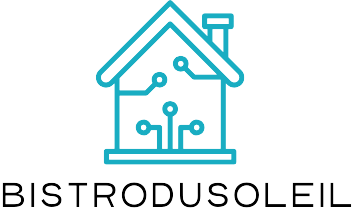Table of Contents
ToggleNavigating the world of home loans can feel like trying to solve a Rubik’s Cube blindfolded. With so many options available, it’s easy to get lost in a sea of confusing terms and numbers. Enter the FHA home loan, a lifeline for many first-time buyers and those looking to refinance. But wait—before diving in, it’s crucial to compare the various FHA options to find the perfect fit for your financial goals.
Overview of FHA Home Loan Options
FHA home loans offer several options catering to various financial situations. The FHA 203(b) loan serves as a primary loan type, designed for standard home purchases. A borrower can obtain this loan with a down payment as low as 3.5%, making homeownership more accessible.
Another option, the FHA 203(k) loan, focuses on home renovation financing. This option allows borrowers to finance both the purchase and the rehabilitation costs. It’s particularly beneficial for buyers looking at fixer-upper properties.
FHA Energy Efficient Mortgages (EEM) promote energy-saving home improvements. They enable borrowers to incorporate energy-efficient upgrades into their mortgage. It’s possible to finance these improvements without increasing the down payment or monthly mortgage payment.
For veterans and active military members, the FHA offers the VA-backed home loan as alternative financing. This option provides benefits similar to FHA loans, including low down payment requirements and competitive interest rates.
Interest rates on FHA loans often remain competitive compared to conventional loans. Borrowers benefit from lower mortgage insurance premiums, albeit with additional upfront fees. It’s crucial to consider these costs when comparing options to choose the most suitable strategy.
Each FHA loan option presents unique advantages and disadvantages. Assessing personal financial goals and specific housing needs helps clarify the best choice. By evaluating loan terms, interest rates, and associated costs, buyers can find the right FHA loan to suit their situation.
Types of FHA Home Loans
FHA home loans come in various types, catering to different financial needs and homebuyer situations. Understanding these options helps buyers make informed decisions.
Fixed-Rate FHA Loans
Fixed-rate FHA loans offer stability for borrowers by locking in an interest rate for the entire loan term. This consistency makes budgeting easier, as monthly payments remain constant regardless of market fluctuations. Typically, these loans span 15 to 30 years, allowing for long-term financial planning. A down payment of 3.5% is standard, making them accessible for many first-time buyers. With competitive interest rates, fixed-rate FHA loans represent an appealing option for those seeking predictability in their mortgage payments.
Adjustable-Rate FHA Loans
Adjustable-rate FHA loans provide initial lower interest rates that change after a set period. Borrowers enjoy affordable payments during the initial phase, which usually lasts 5, 7, or 10 years. Following this period, the rate adjusts periodically based on market conditions, which can lead to higher or lower payments. Borrowers should assess their long-term plans, as these loans may suit those who anticipate moving or refinancing before the first adjustment. In some cases, these loans present a cost-effective solution for those comfortable with some uncertainty in future payments.
Eligibility Criteria for FHA Loans
FHA loans provide accessible options for many borrowers. Specific eligibility criteria exist to ensure applicants meet the necessary standards for these loans.
Income Requirements
Income stability plays a crucial role in FHA loan eligibility. Borrowers typically need a steady income to demonstrate their capability to make monthly mortgage payments. An income-to-debt ratio, often referred to as the debt-to-income ratio, should not exceed 43%. Some lenders may allow higher ratios depending on compensating factors. Documentation of employment history spanning two years is usually required. In some cases, non-taxable income sources like Social Security may be considered.
Credit Score Requirements
Credit scores significantly influence FHA loan eligibility. A minimum credit score of 580 allows borrowers to qualify for the popular 3.5% down payment option. Lower scores ranging from 500 to 579 may still qualify but require a higher down payment of 10%. Lenders assess payment history, overall credit behavior, and any outstanding debts during the evaluation. Strong credit history indicates reliability, helping to secure better loan terms. Borrowers should proactively check their credit reports for any discrepancies before beginning the loan application process.
FHA Home Loan Benefits
FHA home loans offer numerous advantages, making them an attractive option for many borrowers.
Lower Down Payment
A significant advantage of FHA loans is the modest down payment requirement. Borrowers can secure financing with as little as 3.5%. This lower threshold eases the burden on first-time buyers or those with limited savings. In some cases, gift funds can cover the entire down payment. Additionally, those with lower incomes find this option particularly beneficial, enhancing affordability in today’s market.
Flexible Credit Guidelines
FHA loans possess flexible credit guidelines, accommodating a diverse range of borrowers. A minimum credit score of 580 grants access to the favored 3.5% down payment. Those with scores between 500 and 579 may also qualify but require a higher down payment of 10%. Lenders consider overall credit behavior, including payment history, allowing individuals with less-than-perfect credit to enter the housing market. This leniency fosters inclusivity and makes homeownership more attainable for many.
FHA Home Loan Limitations
FHA home loans come with specific limitations that borrowers should understand. Awareness of these restrictions aids in the decision-making process.
Mortgage Insurance Premiums
Mortgage insurance premiums are a critical aspect of FHA loans. Borrowers must pay both upfront MIP and monthly MIP for the life of the loan. The upfront premium amounts to 1.75% of the loan amount, which can be rolled into the mortgage. Monthly premiums vary based on the down payment, generally ranging from 0.45% to 1.05%. Adding these costs can increase monthly payments significantly. These premiums ensure mortgage protection for lenders, although they do increase the overall cost of borrowing.
Property Standards
FHA home loans follow specific property standards that homes must meet. Properties must be safe, secure, and sanitary, aligning with FHA minimum property standards. Appraisals are mandatory to assess property condition and value. Any deficiencies identified during this process may require repairs before closing. Eligible properties may include single-family homes, multi-family homes, and some condominiums, but they must meet FHA criteria. Buyers should understand that not all properties qualify under FHA guidelines.
Navigating the world of FHA home loans can be daunting but understanding the various options available makes the process smoother. By carefully comparing the different FHA loan types and their unique features borrowers can make informed decisions that align with their financial goals. Whether opting for a standard FHA 203(b) loan or considering an FHA 203(k) for renovations each choice carries its own set of advantages and responsibilities.
With competitive interest rates and flexible credit guidelines FHA loans provide a pathway to homeownership for many. Ultimately assessing personal circumstances and long-term plans is essential to finding the right fit in the diverse landscape of FHA home loan options.




